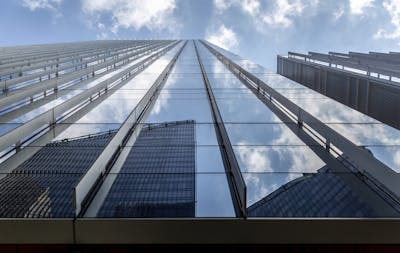
Originally published on LinkedIn by Kelly Roberts, Principal & Project Manager in Walter P Moore’s Atlanta Structures Group.
Overview
Sustainability Expert and Structures Project Manager, Kelly Roberts, shares her thoughts following her presentation at the 2020 Greenbuild Conference & Expo entitled: Modeling Lifetime Carbon: Operations+Embodied+Transportation.
Carbon. This word has been dominating sustainability conversations in the building design and construction industry lately, and the virtual USGBC Greenbuild 2020 conference was no different. I was honored to present with a talented group of individuals on Modeling Lifetime Carbon: Operations+Embodied+Transportation. Our conclusion? It all matters—every piece of that carbon pie.
I spoke about embodied carbon, the emissions associated with the materials and products used to construct the building. It is all of the carbon dioxide emitted by extracting, manufacturing, transporting, and installing materials. Every year, 66 billion square feet of buildings are constructed, and the embodied carbon emissions of that construction are approximately 3.8 billion metric tons CO2 per year (Architecture 2030). Until recently, embodied carbon had not been getting as much attention as operational carbon because it does not have as big of an impact on total carbon. But the critical issue regarding embodied carbon is that it occurs before the building opens, and it never gets reduced. No future efficiency will drive down the embodied carbon. Because embodied carbon happens up front, over the next 30 years, embodied carbon will account for half of new construction carbon, according to the Intergovernmental Panel on Climate Change. As we approach 2050 and try to decarbonize the building industry—we cannot get there without focusing on this piece of the pie.
As structural engineers, much of the embodied carbon in a building is contained in the materials we specify—in concrete, steel, and wood products. For this reason, we should do everything possible to measure and reduce embodied carbon on our projects. This year at Greenbuild, the Structural Engineers 2050 (SE 2050) Commitment officially launched. SE 2050 encourages structural engineers to educate, engage, and report on the impacts of the built environment and embodied carbon. The ultimate goal is that all structural engineers shall understand, reduce, and ultimately eliminate embodied carbon in their projects by 2050.
Walter P Moore is fully committed to the SE 2050 initiative and have been working to shape this program from its infancy. We strongly believe that whole building life-cycle assessment should be included in the building design process and environmental impacts as performance metrics for the building. After all, we cannot reduce what we do not measure.
To further make the case for this and the importance of embodied carbon in construction, Walter P Moore focused our Stewardship Report, Embodied Carbon, A Clearer View on Carbon Emissions, on the critical subject of embodied carbon.
We fully believe there is something we can do on every project, every time, and encourage our project teams to engage us in that challenge.
RELATED CONTENT
Committing to Net Zero, by Dilip Choudhuri, President and CEO of Walter P Moore


